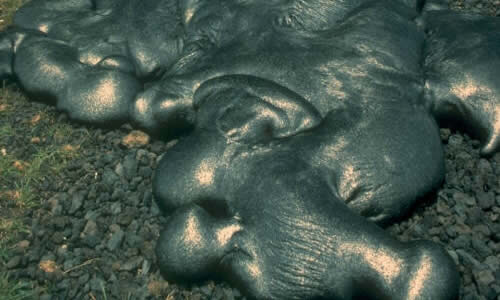Not all volcanoes are the same. We often associate volcanoes with spectacular eruptions, but, in truth, many volcanic eruptions are not explosive. Two major factors that determine the nature of the volcanic eruptions are:
- the chemical composition of the magma
- the gas content of the magma
There are two main types of lava: mafic and felsic.
Mafic lava is lava that has a low viscosity; this means that it can flow very easily. Gas can escape quite easily from this type of lava since it is very fluid. As a result, mafic lava flows during an eruption, instead of exploding from the volcano. Mafic lava, which forms much of the oceanic crust, is high in magnesium and iron. Mafic lava is primarily responsible for forming the Hawaiian Islands.
Two common forms of mafic lava flow are known by their Hawaiian names: pahoehoe and aa. Pahoehoe lava is billowy lava that is often wrinkled and ropy in appearance.
Aa lava, by contrast, has sharp edges and is very jagged when compared with the smoother pahoehoe lava.
Explore Kilauea Lava Flows
Kilauea volcano in the Big Island of Hawaii is one of the most active volcanoes on the Earth.
- Click here to zoom in on Kilauea.
The westward motion of the Pacific Plate over the Hawaiian Hot Spot (see lesson F1-5: Volcanoes and Hot Spots ) has resulted in a number of secondary cones emerging to the east of the main Kilauea crater.
- Click here to see the secondary cones of Kilauea.
One cone in particular, Pu’u’ Ō’ō, has been in constant eruption since 1983.
- Click here to zoom in on Pu’u’ Ō’ō.
- Zoom in/out of the main view panel to try and identify the recent Pu’u’ Ō’ō lava flows illustrated in the diagram below.




